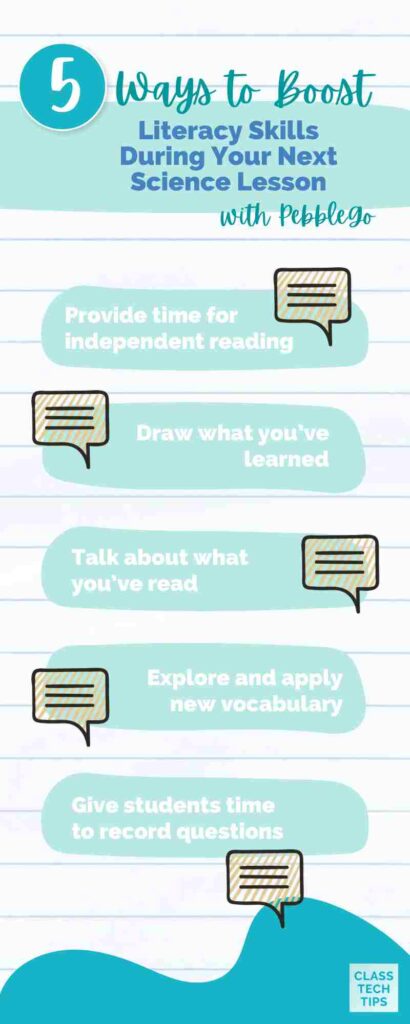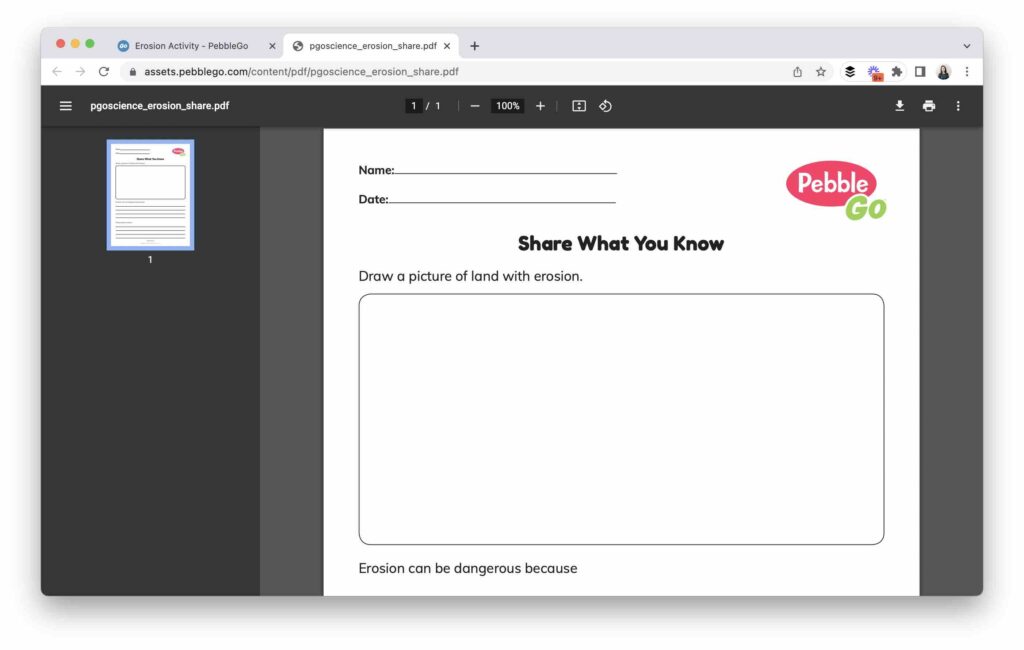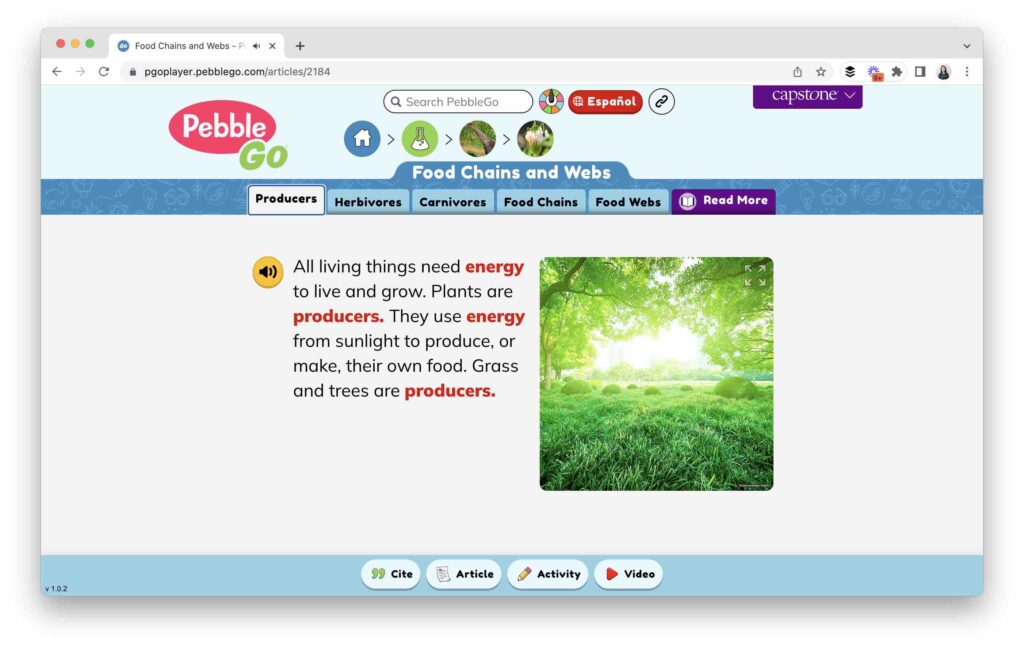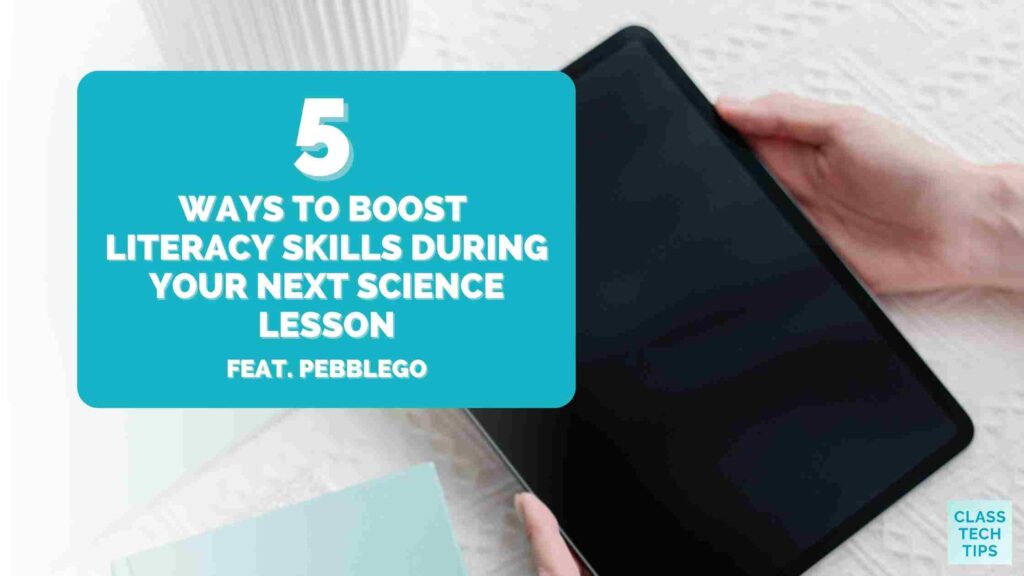Can you boost student literacy skills in the science classroom? During your next science lesson, there are plenty of ways to incorporate reading and writing activities. From providing time for students to read independently to exploring new vocabulary together, you can integrate literacy skills throughout the school day.
Earlier this year, I shared ways to boost literacy skills during social studies lessons, and today I have a science spin for you. Literacy plays a part in all the things we do. For example, students might ask questions about the world around them in the same ways they inquire about a topic after reading an article.

Boosting Literacy During a Science Lesson
If you’ve stopped by the blog before, you know how much I love the resources Capstone offers students and teachers. You can use PebbleGo and PebbleGo Next to give students quick access to high-quality, high-interest reading materials throughout the school day.
Students can use PebbleGo to explore a variety of science topics and interact with digital text at the same time. On this platform, students can hear a word read aloud or have an entire text read aloud to them. In addition, they can find out the meaning of new words and even see pictures that correspond with different sections of a text.
5 Ways to Boost Literacy Skills
In today’s blog post, we’ll look at 5 ways to boost student literacy skills with reading and writing activities during your next science lesson.
Provide time for independent reading
Both PebbleGo and PebbleGo Next have sections dedicated to science topics. This is an excellent option for independent reading that you may incorporate into your next science lesson. With this independent reading practice, you might give students a half dozen articles to choose from related to an upcoming topic.
For example, you might give students the option to choose from an article on Droughts or one on Hurricanes if you are teaching a new unit on extreme weather. This is a great opportunity for students to build stamina as independent readers while exploring a relevant science topic at the same time.
Draw what you’ve learned
To respond to a reading experience, you might ask students to draw what they have learned. For example, imagine your students are reading this PebbleGo article about Erosion and wrapping their heads around this concept for the very first time. One activity that corresponds to this article asks students to “Draw a picture of land with erosion.” This gives them a creative way to respond to a reading experience during a science lesson.

Talk about what you’ve read
Speaking and listening skills are crucial components of English Language Arts or literacy skills. If you want students to talk about what they’ve read but you’re not sure where to start, tap on the Activity button at the bottom of a passage. This will give you access to a variety of resources, including a PDF with “Questions for Understanding.” To help students talk about what you’ve read together as a class, you might use these questions to spark a conversation.
Explore and apply new vocabulary
As you move throughout the different passages available on PebbleGo’s website, you’ll notice that certain words are bold. For example, this screenshot shows the Food Chains and Webs article. When you tap on that word, a definition appears so students can better understand what that word means. Students can also press play to hear the pronunciation of the word.
After students have explored this new vocabulary, you might encourage them to use it in a conversation with a partner or as part of a reading response. Learning new words in context is an essential skill for students in all subject areas. This is a great opportunity to incorporate this literacy skill into your next science lesson.

Give students time to record questions
Pausing to ask questions and keeping track of questions is a literacy skill students can use throughout their school day. As students interact with new concepts in the science classroom and read about new topics, you may want to give students time to record questions they have.
The questions students record could have specific answers and lead to a new research project. Alternatively, the questions they record might not exactly have an answer, but they give them a chance to boost their curiosity and literacy skills.
PebbleGo and Your Next Science Lesson
Ready to get started using PebbleGo and PebbleGo Next during your next science lesson? Head over to this page to learn more, or click the links to the different passages I included throughout this blog post. It will give you a taste of what wonderful resources the team at Capstone has to offer teachers and students.







